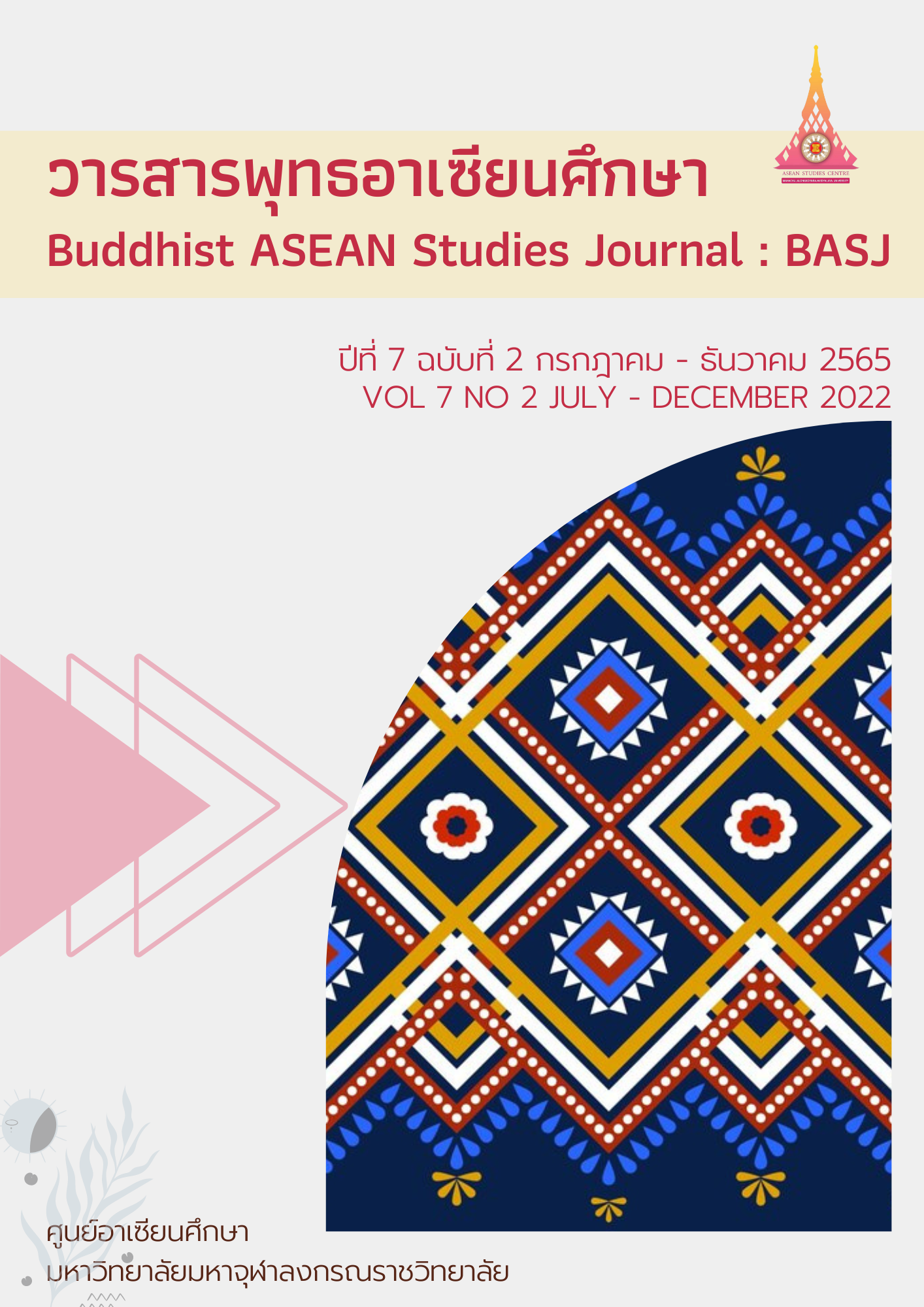Ethnic Diversity and Peaceful Coexistence in ASEAN Community: Case Study of Thai and CLMV Student Groups in Mahachulalongkornrajavidyalaya University (Main Campus)
Keywords:
Ethnic Diversity, Peaceful Coexistence, Thai and CLMV Student GroupsAbstract
The current research aimed to 1) explore the contextual status of the co-existence of Thai and CLMV students in Mahachulalongkornrajavidyalaya University (Main Campus); 2) to propose a model of a peaceful way of co-existence in the midst of ethnic diversity of students of Mahachulalongkornrajavidyalaya University (Main Campus). This research adopted a qualitative field research approach by means of a documentary study and in-depth interviews with 2 groups of a total of 32 key informants.
The research suggested that the key connections of students’ common learning despite their diversity are the commitment to their aim of study, common core teaching of Buddhism, and the assistance of Thai students and university faculty. Co-existence also allows for the self-adjustment of CLMV students with a trend of better self-development. The cautions also allow and suggest for co-existence of students with ethnic diversity including verbal expression, learning the culture of each country, bringing no historical stories to incriminate one another, no harsh or threatening expression toward one another, no ill-treatment of one another, expression of an open hearth and tolerance, and self-expression of friendship. Neither Thai nor CLMV students reported their expectation of the university’s management that facilitates peaceful co-existence of Thai and foreign students with the university’s providing the direction for their stepping forward together in peace. The key to building unity among students with ethnic diversity for their peaceful co-existence involves the common goal of students and the university in faithfulness and dedication toward Buddhism as Mahajula students’ identity (MCU Identity). It requires 3 major factors, namely: 1) inheritance of an ideological led to the common way of practices of the institutions; 2) culture weaving of institutions combining the power to create unity; and 3) cultivation of learning peace culture in the classroom, as called the Model’MCU-ICC. The core of the model is the adoption of Buddhism’s Dhamma principles which include observation of Sila; student disciplines; forbearance; physical. verbal, and mental benevolence towards one another; sharing; non-violent communication; contribution to peer students and society; building equity; maintaining justice; and overseeing a supportive way of existence. It can be stated that the Model’MCU-ICC can be applied as a common way of co-existence in the ASEAN community of ethnic diversity for its lasting peace and security.
References
Sponsorship Received from ASEAN Studies Center. Mahachulalongkornrajavidyalaya University Budget Year of 2016.
The Way to Bring ASEAN Curriculum Sourcebook to Practices.
ASEAN Community. Bangkok: ASEAN Thailand, Foreign Ministry).
Bunyakiat, C. “Preparation of Readiness on Thailand’s Education to Enter ASEAN
Community”, Extra lecture, 1, 3, 2012. http://www.aseantalk.com/index.php?topic=55.0, [20 Feb. 2016].
Suwanchata, P. (1997) Three Decades ASEAN. Bangkok: Project Foundation., Social Science and Humanities.
Information from student registration of Mahachulalongkornrajavidyalaya University dating 25
December 2015.
Downloads
Published
How to Cite
Issue
Section
Categories
License
Copyright (c) 2022 Buddhist ASEAN Studies Journal

This work is licensed under a Creative Commons Attribution-NonCommercial-NoDerivatives 4.0 International License.


